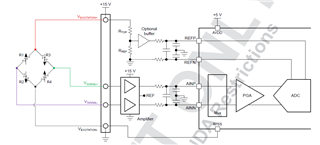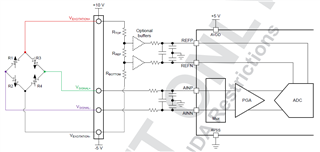Other Parts Discussed in Thread: ADS125H02
Hi,
I want to measure strain gauge sensor fed with 10V excitation. As far as I understand 10V value exceeds absolute voltage and common mode range of ADS1261. How can I use ADS1261 for this purpose? and is radiometric voltage excitation possible with this ADC?




